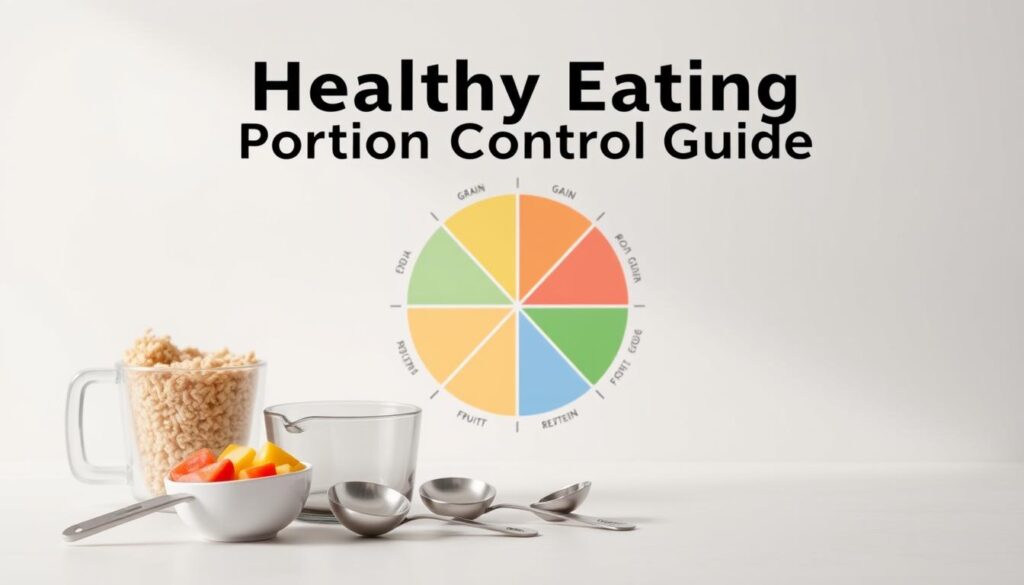The Food Pyramid Nutrition : Your Guide to Master Healthy Eating
Ever felt lost about what to eat? The food pyramid is your guide to a balanced diet. Since 1992, it has changed how Americans view nutrition.
The Food Pyramid Nutrition was a game-changer in dietary guidance. It showed how different foods affect your health. It was more than a chart; it was a new way to see how food impacts your well-being.
Start your nutrition journey here. The food pyramid breaks down complex diet advice into simple steps. It helps you control your food choices and make better eating habits.
Table of Contents
Understanding the Food Pyramid Basics
Getting into nutrition can seem tough, but the food pyramid is here to help. It’s made by the United States Department of Agriculture (USDA). This guide makes it easy to follow dietary guidelines and understand what you need.
The food pyramid is more than a picture. It’s a way to eat right and stay healthy. It shows you how to make meals that are good for you and help avoid sicknesses.
Key Components of Nutritional Guidance
The pyramid sorts foods into groups that are good for you. Here’s what you need to know:
- Vegetables and Fruits: Half of your daily intake
- Grains: Focus on whole grains
- Protein: Choose lean and varied sources
- Dairy: Pick options high in calcium
Why the Food Pyramid Matters
Learning about food with the pyramid helps you:
- Choose better foods
- Keep your diet balanced
- Stay at a healthy weight
- Lower your risk of serious diseases
By using these tips, you can change how you think about food. This can help you stay healthy for a long time.
Food Pyramid Nutrition: Essential Components and Guidelines
Learning about the food pyramid is key for balanced meals and good nutrition. It’s a visual guide for making healthy food choices. It shows you the right amounts of different food groups.
The pyramid teaches about portion control and balanced eating. It divides food into categories. Here are the main parts of the food pyramid:
- Complex carbohydrates are at the base
- Fruits and vegetables are next
- Proteins and dairy follow
- Fats and sugars are at the top, in small amounts
Here are important tips for food groups:
- Choose whole grains and complex carbs first
- Eat lots of fruits and veggies every day
- Go for lean proteins and low-fat dairy
- Limit processed foods and sugars
The food pyramid guides you on portion sizes. The U.S. Department of Agriculture gives daily amounts based on your age, gender, and activity. Following these tips can lead to better health and lower disease risks.
The Foundation: Grains and Complex Carbohydrates
Grains are key to a balanced diet, at the base of the nutritional pyramid. Knowing their role helps you choose better foods and avoid nutritional gaps.
Complex carbs give your body the vitamins and minerals it needs to work well. They are a main energy source, powering your day and keeping you healthy.
Recommended Daily Servings of Grains
Experts say you should have 6 to 11 grain servings a day. This amount gives you enough energy and nutrients. Your needs change based on your age, how active you are, and your metabolism.
- 6-11 total daily grain servings
- Focus on whole grain options
- Vary your grain selections
Choosing Whole Grains Over Refined Options
Whole grains are better for you than refined ones. They have more fiber, vitamins and minerals, and help your digestion. Refined grains lose important nutrients when processed.
| Grain Type | Nutritional Benefits | Recommended Servings |
|---|---|---|
| Whole Wheat Bread | High fiber, B vitamins | 2-3 servings daily |
| Brown Rice | Magnesium, selenium | 1-2 servings daily |
| Quinoa | Complete protein, iron | 1 serving daily |
Smart Carbohydrate Choices for Energy
Pick complex carbs for lasting energy and to avoid nutritional gaps. Go for grains that are minimally processed and full of natural nutrients.
- Choose whole grain pasta
- Select steel-cut oats
- Include barley and bulgur
- Limit refined sugar intake
By focusing on whole grains and their nutritional benefits, you build a solid diet. This supports your health and well-being for the long term.
Fruits and Vegetables: Your Daily Nutritional Powerhouse
Your diet is key to avoiding nutritional gaps. Experts say 50% of your plate should be fruits and veggies. These foods are packed with vitamins and minerals that boost your health.
The Food Guide Pyramid advises eating 3 to 5 servings of veggies and 2 to 4 servings of fruits each day. Each serving adds a mix of nutrients that protect your body from health issues.
- Vegetables offer critical vitamins and minerals with low calorie content
- Fruits provide natural sugars, fiber, and important micronutrients
- Colorful produce indicates a wide range of nutritional benefits
Choosing whole fruits over juices is better for nutrition. A medium apple, for instance, has:
- 94.6 calories
- 4.37 grams of fiber
- 0.473 grams of protein
- 25.1 grams of carbohydrates
Eating more fruits and veggies can lower cancer risks and help your heart. By focusing on these foods, you fight off nutritional deficiencies and enjoy tasty, natural options.
Proteins and Dairy: Building Blocks for Health
Proteins and dairy are key for a balanced diet. They help your body stay healthy and function well.
Lean Protein Sources and Portions
It’s important to pick the right protein sources. The MyPlate guidelines give specific amounts based on age and gender:
- Women ages 19-30: 5-6.5 ounce equivalents daily
- Men ages 19-30: 6.5-7 ounce equivalents daily
- Older adults: Slightly reduced portions between 5.5-6.5 ounce equivalents
Good protein sources are:
- Skinless chicken breast
- Fish
- Lean beef cuts
- Turkey
- Eggs
Dairy Requirements for Optimal Health
Dairy is full of calcium and vitamin D. MyPlate says we should have 3 cups of dairy a day. But, about 90% of Americans don’t get enough.
Plant-Based Protein Alternatives
If you’re vegetarian or vegan, there are many protein options. These include:
- Legumes
- Tofu
- Tempeh
- Nuts and seeds
- Plant-based protein powders
You can mix different protein sources in your diet. This way, you get all the nutrients you need and enjoy a variety of foods.
Understanding Fats, Oils, and Portion Control

Learning about fats and oils is key for healthy eating. Not all fats are the same, and knowing their role in your diet is important. The top of the food pyramid shows how managing fat intake is crucial.
Different fats affect your body in different ways. Here’s a quick look at the main types:
- Saturated Fats: Found in animal products, these should be consumed sparingly
- Unsaturated Fats: Heart-healthy options from nuts, seeds, and fish
- Trans Fats: Artificial fats to avoid completely
Controlling portions is vital for managing fat intake. The Dietary Guidelines suggest limiting fat to certain percentages of your daily calories:
| Calorie Intake | Recommended Fat Intake |
|---|---|
| 1,600 calories | 53 grams of fat |
| 2,200 calories | 73 grams of fat |
| 2,800 calories | 93 grams of fat |
When eating healthy, focus on essential fats that support your body. Choose healthy fats like avocados, olive oil, and fatty fish. Remember, moderation and mindful portion control are essential for a balanced diet.
Making Smart Choices: Reducing Added Sugars and Sodium
Understanding the effects of added sugars and sodium is key to healthy eating. The dietary guidelines stress the need for smart food choices. These choices are vital for your overall health and well-being.
Too much sugar and sodium can harm your health. What you eat every day affects your health and can prevent diseases.
Understanding Added Sugar Impact
Added sugars cause many health issues. The daily sugar limits depend on how many calories you consume:
- 1,600 calories: 6 teaspoons of added sugars
- 2,200 calories: 12 teaspoons of added sugars
- 2,800 calories: 18 teaspoons of added sugars
Practical Sodium Reduction Strategies
Keeping sodium intake low is important for your heart. Health experts suggest limiting sodium to:
| Recommendation | Sodium Intake |
|---|---|
| Conservative Limit | 2,400 mg per day |
| Broader Guideline | 3,000 mg per day |
Smart Food Label Reading
Start your healthy eating journey by reading food labels carefully. Look for low-sodium and no added sugar products. This helps you make better food choices.
- Choose whole foods over processed options
- Use herbs and spices instead of salt
- Select fruits for natural sweetness
Following these guidelines can greatly improve your diet. It supports your health for the long term.
Implementing the Food Pyramid in Daily Life

Turning the food pyramid into daily meals needs smart planning and a commitment to eating well. Start your balanced diet journey by learning to add nutritional guidelines to your meals.
Here are key strategies for using the food pyramid well:
- Create weekly meal plans that include foods from all pyramid groups
- Practice portion control using recommended serving sizes
- Shop strategically by focusing on whole food ingredients
- Prepare balanced meals that maximize nutritional diversity
Meal planning gets easier when you know the right amounts. Your plate should reflect pyramid recommendations: half veggies and fruits, a quarter lean proteins, and a quarter whole grains.
| Food Group | Daily Recommended Servings | Nutrition Benefits |
|---|---|---|
| Vegetables | 3-5 servings | Vitamins, minerals, fiber |
| Fruits | 2-4 servings | Antioxidants, natural sugars |
| Whole Grains | 6-8 servings | Complex carbohydrates, energy |
| Proteins | 2-3 servings | Muscle maintenance, repair |
Smart grocery shopping makes healthy eating easier. Focus on whole foods, avoid processed items, and always check labels. Remember, the food pyramid is a guide, not a rulebook.
By sticking to these tips, you’ll build lasting eating habits that boost your health and wellness.
Adapting the Food Pyramid for Special Dietary Needs
Creating a balanced diet is not the same for everyone. Your health needs, cultural background, and likes are key. Learning to adjust the food pyramid for your special needs is important for good nutrition.
Different diets need different nutrients. Here are some tips for various diets:
- Vegetarian Diets: Focus on plant-based protein sources like legumes, tofu, and nuts
- Gluten-Free Diets: Replace wheat-based grains with quinoa, rice, and gluten-free alternatives
- Vegan Nutrition: Emphasize fortified plant-based proteins and vitamin B12 supplements
When dealing with special dietary needs, getting help from health experts is crucial. Registered dietitians can craft a nutrition plan tailored to your health goals. They ensure you get all the nutrients you need.
| Dietary Pattern | Key Nutrient Considerations | Recommended Modifications |
|---|---|---|
| Vegetarian | Protein, Iron, B12 | Legumes, fortified foods, supplements |
| Gluten-Free | Fiber, Whole Grains | Alternative grains, increased vegetable intake |
| Vegan | Calcium, Protein, Iron | Plant-based proteins, fortified foods |
Your cultural food preferences can absolutely be incorporated into a balanced diet. The trick is to mix traditional foods with nutritional balance. Flexibility and personalization are key to lasting dietary choices.
Conclusion
The journey through food pyramid nutrition shows a clear path to balanced eating. It’s not about strict rules but making smart choices for your health. The Food Pyramid is a flexible guide to help you make better food choices.
Knowing how much to eat and what nutrients you need is key. Only 12% of U.S. adults are metabolically healthy. Smart nutrition strategies are crucial. MyPlate, introduced in 2011, helps you see what a balanced meal looks like, with half your plate full of fruits and veggies.
Nutrition changes over time as science learns more. The Food Pyramid is a starting point, but your needs might differ. Talking to health experts and keeping up with new nutrition advice helps you tailor your diet to your health goals.
By following food pyramid nutrition, you can turn your diet into a health powerhouse. Your journey to balanced nutrition is always ongoing. Every mindful choice you make brings you closer to a healthier, more vibrant life.








2 Comments
Comments are closed.